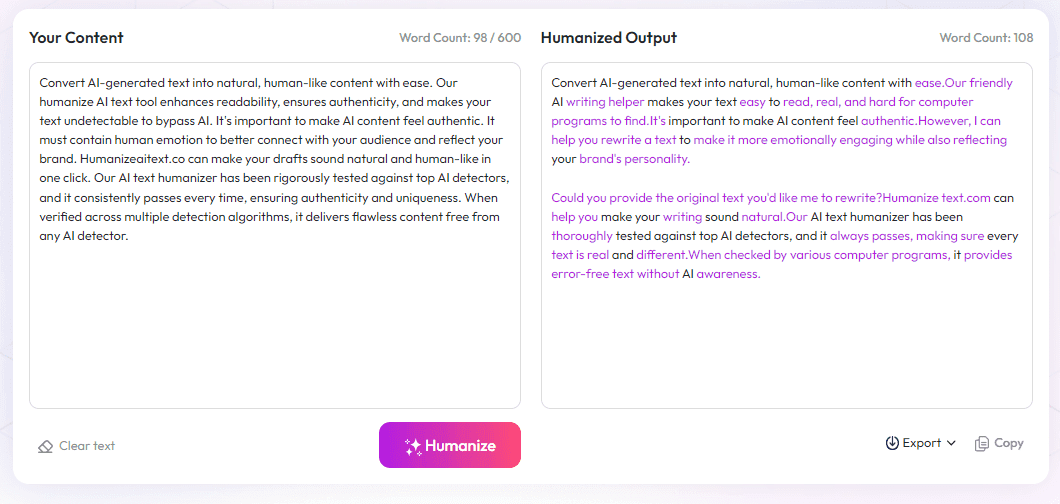Table of Contents
Many of us feel overwhelmed trying to keep our personal brands on track, especially with so many platforms and details involved. If you're ready to get organized and really understand what your brand says about you, you're in the right place. Stick with me, and I’ll show you a simple checklist to evaluate where you stand and how to make improvements.
By the end, you’ll have a clear plan to review your current image, improve your online presence, and keep your brand consistent. Whether you're building a new profile or just want to stay on top of things, this personal brand audit checklist will keep you honest and focused.
Here’s a quick preview of what’s included: from checking your online footprint to gathering feedback and scheduling regular reviews — all in a straightforward plan that makes managing your brand less of a headache.
Key Takeaways
- Review your online profiles, content, and achievements to see what your current personal brand says about you. Look for inconsistencies across platforms.
- Define clear core traits and values that represent your professional identity. Make sure these align with how you want to be seen.
- Google yourself to check your online footprint. Update or remove outdated or unprofessional content to protect your reputation.
- Ensure your visuals and messaging are consistent across platforms. Use similar pictures, colors, and tone to make your brand recognizable.
- Get honest feedback from trusted colleagues or friends. Their insights can reveal blind spots and help refine your brand.
- Research others in your field to spot what works well and identify gaps in your branding. Use this to stand out authentically.
- Create a simple action plan to improve your profiles, messaging, and visuals. Set goals and deadlines to stay on track.
- Check that all technical details — names, contact info, bios — are correct and consistent. Consider setting up a personal website as a hub.
- Regularly revisit your personal brand. Set reminders to review and update your profiles, so your online presence stays fresh and relevant.

1. Review Your Current Personal Brand
The first step in conducting a personal brand audit is to take stock of what you currently have out there. Gather all your online profiles, content, and achievements to get a clear picture of your existing brand presence.
Look at your social media profiles, website, LinkedIn, and any other platforms where you showcase yourself or your work.
Identify the types of content you’ve shared, the tone you’ve used, and the messaging that currently defines you.
Highlight your key accomplishments, skills, and areas of expertise that are visible to your audience.
For example, if your LinkedIn profile highlights your project management skills but your Instagram primarily features personal lifestyle content, note this discrepancy.
Remember, 44% of employers have hired candidates based on personal branding content, so what’s visible to the outside world truly matters.
2. Clarify Your Core Brand Elements
Next, get clear on what you want your personal brand to stand for. Pick a few adjectives or core traits that describe your ideal professional identity.
This could be anything from “innovative,” “dependable,” to “creative” — but make sure it resonates with your true self and goals.
Define your values, passions, and what makes you unique in your field.
For example, if you’re a marketer passionate about storytelling, your brand should communicate authenticity, creativity, and strategic thinking.
Refining these elements helps align your online presence with who you want to be perceived as.
3. Check Your Online Presence
The digital footprint you leave behind has a huge impact. Search your name on Google and review the top results.
Are your social media profiles professional and consistent? Are there any outdated or inappropriate posts?
Keep in mind, 47% of employers are less likely to interview a candidate they can’t find online, so it’s crucial to curate your digital visibility.
Update or remove content that might damage your reputation and make your profiles reflect your core brand traits.
If you’re missing key platforms or profiles, consider creating a personal website or portfolio to centralize your brand story.
4. Analyze Your Visual and Verbal Identity
Consistent visuals and tone of voice form the backbone of a recognizable personal brand. Review your profile pictures, logos, fonts, and colors.
Ensure your visual style aligns with the adjectives you chose earlier — for example, a playful brand might favor bright colors, while a corporate professional might opt for clean, muted tones.
Similarly, examine your verbal identity—how you write and speak in your content.
Are your messaging style and tone consistent across platforms? Do they reflect your core brand elements?
Matching visuals and language helps others instantly recognize you and builds trust.

5. Gather Feedback from Others
Getting honest opinions on your personal brand can uncover blind spots and validate what you're already doing well.
Ask colleagues, mentors, or friends to review your online profiles and messaging.
Encourage them to share specific thoughts about how your brand comes across and what impressions they gain.
Consider joining networking groups or online communities relevant to your field for broader perspectives.
Remember, 54% of employers have rejected candidates due to poor personal branding on social media profiles, so peer insights can help you stand out positively.
6. Research Your Competitors and Peers
Understanding how others in your niche present themselves can give you ideas and highlight gaps in your own branding.
Look at industry leaders and rising stars—note what works well and what feels authentic to you.
Compare your profiles, content, and engagement strategies, then adapt successful tactics authentically.
This kind of research helps you position yourself clearly and avoid blending in with the crowd.
Keep in mind, on average, companies with strong employer brands attract 1.5 times more applicants, so differentiating yourself is key.
7. Create a Plan to Improve Your Brand
Once you've gathered insights, draft a straightforward action plan focused on areas needing enhancement.
Prioritize changes like updating your LinkedIn profile, polishing your visual identity, or sharpening your messaging tone.
Set specific goals—such as increasing your LinkedIn followers by 20% or posting regularly to boost visibility.
Break down tasks into manageable steps and establish deadlines to keep yourself accountable.
Don't forget to track your progress; regularly revisiting your goals ensures you're moving in the right direction.
8. Manage Practical and Technical Details
Beyond content, make sure all technical aspects of your online presence are professional and consistent.
This includes verifying your profiles use the same name, profile picture, and tone of voice across platforms.
Ensure your contact info is up-to-date and that your bios highlight your core brand traits clearly.
If you don’t have a website, consider creating one to serve as a central hub for your brand story and portfolio.
Utilizing tools like (https://automateed.com/best-website-builder-for-authors/) can make the process straightforward.
9. Schedule Regular Brand Checks
Personal branding isn’t a one-and-done effort—it requires consistent upkeep.
Set reminders every few months to review and update your profiles, content, and overall message.
Monitor your progress with analytics—track follower growth, engagement rates, and opportunities gained.
Adjust your strategy based on what’s working and what isn’t, keeping your brand fresh and relevant.
Remember, 76% of professionals report gaining new opportunities through strategic personal branding—so ongoing effort pays off.
FAQs
Reviewing your current personal brand helps you understand how you’re perceived, identify strengths, and areas needing improvement. It ensures your brand reflects who you are and aligns with your goals.
Start by defining your values, strengths, and passions. Focus on what sets you apart, and keep your messaging consistent across different platforms for a clear personal identity.
Review your social media profiles, website, and any online mentions. Ensure your online content aligns with your personal brand and presents a professional image.
It’s recommended to review your personal brand at least twice a year. Regular checks help ensure your brand stays relevant and true to your changing goals and experiences.



